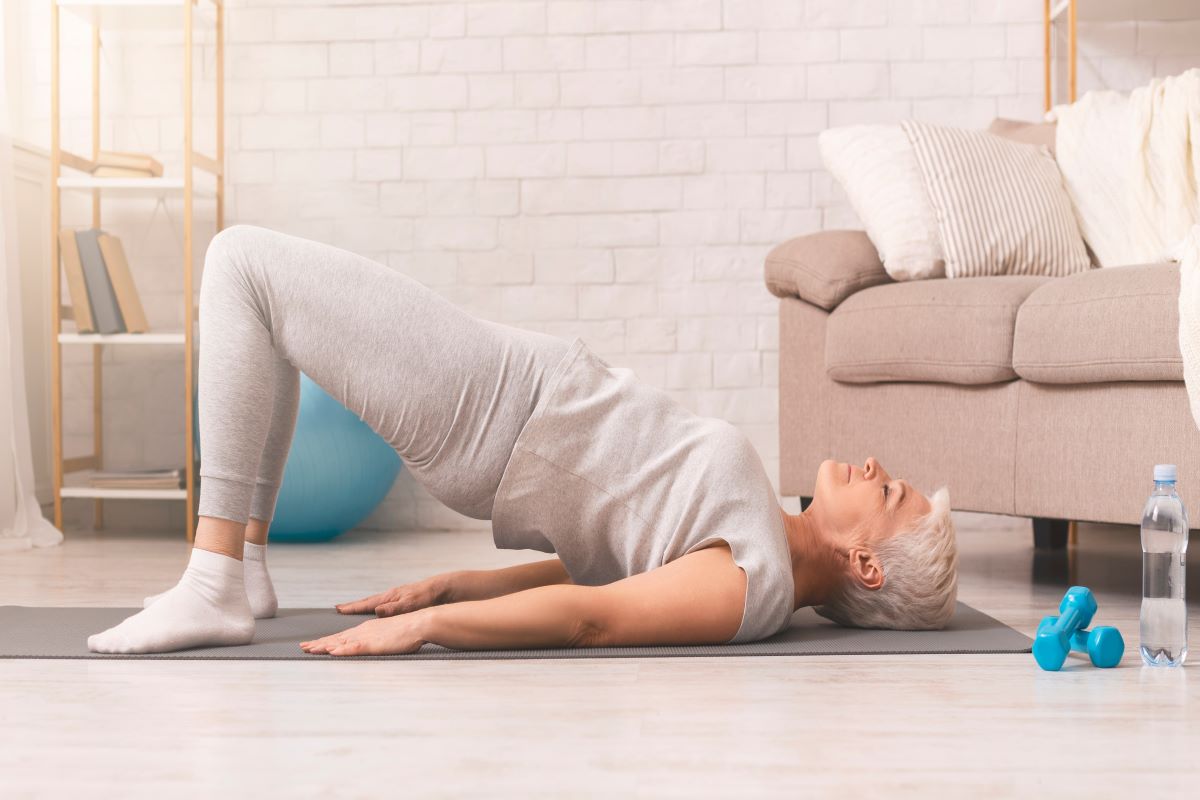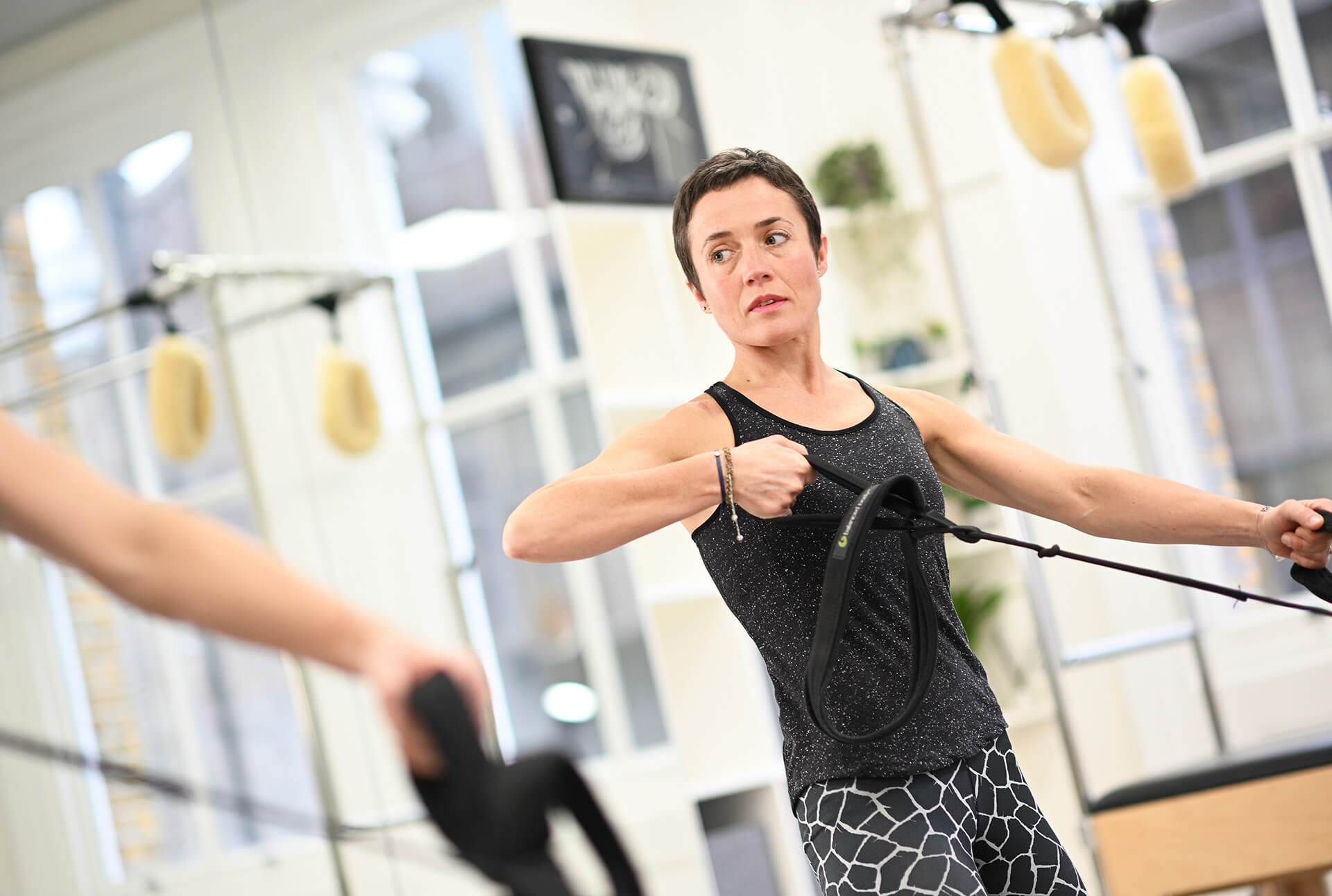- Working from home?
- Can’t leave the house because you have kids at home?
- Feel self-conscious about exercising in public?
- Find it difficult to get out due to limited mobility
- Want to reduce your costs of exercise?
- Do you want to be able to do Pilates at home?
- Are you interested in learning Pilates exercises but don’t know where to start?
Keep reading as this will give you all the answers!
What are the differences between exercise at home and in person?
The benefit of exercising at home is that it generally saves you time by reducing travel. It also means that you are in a familiar and comfortable environment, and is likely to reduce costs as you aren’t being seen in person. The benefit of doing Pilates in person is that you get to exercise in a different environment, you get to be with other people which you may find more motivating and that you get more guidance with exercise, particularly if you are doing one-to-one Pilates!
What do you need to do Pilates at home?
To get started all you need is a mat and some head support. Pilates is best done on a mat on a hard surface as it will be more stable than just lying on a carpet but still give you the cushioning that you need to make it more comfortable. Typically, Pilates is performed on a slightly thicker mat than you would expect to see in a yoga class. Around 6mm thick is the minimum for online Pilates classes and for those of you who prefer, up to 15mm will provide better cushioning. Most people will also need something to support the head slightly off the floor. This is important because positioning the head, neck and shoulders correctly helps support the whole spine in a position which makes the exercises more effective. You can purchase a small foam block for this, but you can also use a folded towel as a DIY version. A towel folded to about 2 – 3 cm thick is ideal. Using a block or towel will allow your head to move freely whereas a pillow is generally too bulky for this. If you are quite stiff or hunched in your upper back you may need support of two blocks or towels. Effectively, you may need to experiment and choose the amount of support that feels most comfortable.
What clothes should you wear to do Pilates at home?
The most important thing is that you wear clothes for Pilates that are comfortable and that you can move freely in. Clothes made of stiff materials like jeans will not allow freedom of movement. As you will often be lying down, clothes with pockets and zips will be uncomfortable. Jewellery and other accessories, like watches, can also be uncomfortable, particularly when you are on all fours, so it is best to remove these. Finally, Pilates is about developing body awareness, so it may be helpful to wear more form fitting clothes so that you can see your body rather than hiding it under baggy items.
What Pilates exercises should you do at home?
There are lots of different exercises that you can do at home but it can be a bit overwhelming to wade through lots of content online trying to find ideas. If you want to exercise completely under your own steam you can find lots of videos of Pilates exercises, particularly on YouTube. It’s probably best to start with a few key basics and do these. Although it’s exciting to try lots of different exercises it’s also important not to forget that a large part of the improvements that come through doing exercise is due to consistent repetition and practice. Keep reading to discover seven key Pilates exercises to get you started. If you are interested in slightly more structure you might choose to pay for online exercise. On Demand style exercise programmes give you some of the benefits of exercise at home such as freedom to choose when and where you exercise but may provide more guidance, variety and progression.
Pilates exercise classes at home
If you want the motivation of doing a class with others but without the hassle of travelling, you could opt for doing a virtual class. You get live instruction and feedback from an instructor plus that feeling of being connected to others as you all figure out the exercises in real time together.
1-2-1 Pilates at home
When you are first starting out with Pilates it can be quite difficult to understand the subtlety of the exercises. Working one-to-one with an instructor can really improve your experience and dramatically speed up results. They can offer tips and guidance as to how to get the most out of the exercises. They can also customise the experience so that you are using exercises and variations that most suit your body and your goals. If you’ve ever felt that Pilates is too easy, boring or even uncomfortable then this one is for you!
Small equipment for Pilates at home
Once you become more familiar with the exercises, or if you have already done some Pilates you might want to add some small equipment to your exercise kit. Common small equipment items are a soft Pilates ball, a magic circle, exercise bands, and foam roller. You can also use small weights.
Seven Pilates exercises to get you started
Bridge
This is a great exercise with lots of variations and works on the back of your body so great for posture!
Dead bug
Get back to basics with an exercise which sits at the heart of Pilates. This one is all about focusing on awareness of your pelvic position and connecting to your deeper spinal and abdominal muscles.
Side plank
It’s easy to get stuck in the habit of thinking that working your core is all about the front part of the abdominals and doing planks and sit ups. However, side body strength is also super important! This exercise works your obliques hard, especially if you work resting on your forearm. This exercise is also much more challenging for the shoulders and arms since all your weight is on one arm. It also challenges the glutes, so it’s a great all over body exercise.
Superman
A Pilates staple! This exercise helps you to develop body awareness as you are in an unfamiliar position relative to gravity so you have to think about your body more, especially the position of your spine! Lifting the arm and leg also challenges your balance, forcing you to use the core muscles.
Leg pull (or reverse plank)
This exercise works the backs of your legs and backs of your arms – often much neglected areas. As it is in weight bearing it is great if you have osteoporosis and brilliant if you want a good postural exercise.
Panther
This is a good transition from all fours to full plank, introduces some more dynamic movement into the workout.
Book openings
Use this exercise to work on your spinal mobility and stretch out a little bit after your workout. Brilliant if you sit at a desk all day!




